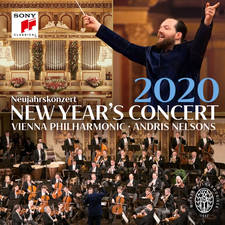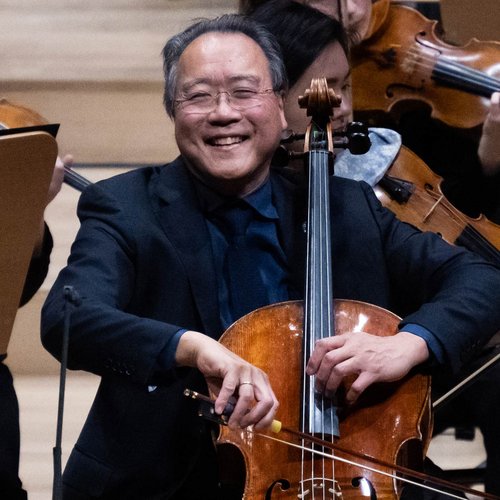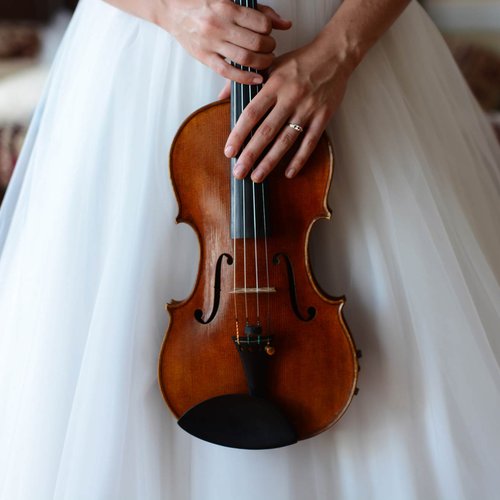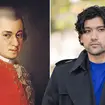The 8 best pieces for sopranos
16 April 2018, 13:47 | Updated: 16 April 2018, 17:25
These might just be the best songs ever written for the high female voice.
By Victoria Longdon
The soprano voice has always had a certain allure for composers, perhaps because of the breadth of colour and technical variety it offers. With such a huge body of repertoire from which to choose, we thought that the job of creating a list of the best would be impossible.
However, after a serious amount of grappling and a few arguments in the office, we’ve come up with a shortlist. This is ClassicFM.com's pick of the most beautiful and jaw-droppingly impressive pieces sung by divas the world over:
‘Glitter And Be Gay’ – from ‘Candide’ by Bernstein
‘Glitter And Be Gay’ is such a challenging aria that alternative phrases are written at several points in the score for those who simply can’t hack the vocal gymnastics, which include three high E flats (E flat 6, or the E flat above top C).
Singing stratospherically high notes like these is even more difficult if you happen to be whipping a string of pearls around your neck whilst singing, which makes this performance even more amazing:
‘Der Hölle Rache’ - from ‘The Magic Flute’ by Mozart
You couldn’t make a list of the most impressive pieces for soprano voice without including Mozart’s iconic ‘Queen Of The Night’ aria. The piece starts in D minor, (a key commonly associated with tragedy and which featured very heavily in the Requiem to which Mozart turned his thoughts after completing The Magic Flute) but it quickly moves to F major as the Queen Of The Night threatens to disown Pamina if she does not kill Sarastro.
In the grip of her fury (‘rache’), the Queen Of The Night hits a string of repeated high Cs, and a flourish which includes a top F, making this aria an enticing challenge for high sopranos:
‘Les Oiseaux Dans La Charmille’ – from ‘Les Contes d’Hoffmann’ by Offenbach
This wickedly humorous aria requires the singer to assume the role of a mechanical doll. When the inventor Spalanzani presents the mechanical doll Olympia at a party, he hopes to sell her and make a profit. However things don’t go to plan when one of the partygoers falls in love with her, bewitched into thinking she is a real woman.
The challenge of this aria lies not just in the huge range and detailed filigree of the coloratura (the high, fast sections of notes), but the stage presence and gift for comedy which the role demands:
Gepopo’s arias – from ‘Le Grand Macabre’ by Ligeti
The role of Gepopo nabs a place in our top picks simply because it packs a double-whammy of both dazzling skill and entertainment value. In a society coming to terms with an oncoming apocalypse, the head of the secret service, Gepopo, has to tell the king about riots in the street.
Ligeti’s performance directions read 'with extreme panic and hysteria' and then 'even more panic', and finally 'completely beside herself’. Here’s the amazing Barbara Hannigan stealing the stage:
‘Liebestod’ – from ‘Tristan und Isolde’ by Wagner
This heavyweight aria comes shortly after the death of Tristan at the end of Wagner's opera Tristan and Isolde. Isolde describes a vision of Tristan risen again, before dying herself. You can get a sense of the weight of this emotionally exhausting climax from this excerpt of the Bayreuth production from 1995 conducted by Daniel Barenboim. The ‘Liebestod’ starts at 07:40:
‘Fleurs’ – from Fiançailles Pour Rire No. 6 by Francis Poulenc
The shortest entry on our hit-list, this vignette about unfulfilled potential and lost love is over before it’s even begun. The work is the last in a song cycle of six mélodies for voice and piano with texts by Louise de Vilmorin. Despite its brevity, the complexity of the harmony is absolutely arresting and the melody incredibly satisfying to sing:
‘Five Fathoms Deep’ - The Tempest - Thomas Ades
Thomas Ades is getting a reputation for writing crazy arias for soprano. With a libretto paraphrased from the original Shakespeare by Meredith Oakes, Audrey Luna sings ‘Five Fathoms Deep’ rather than ‘Full Fathom Five’.
Whilst we’re talking about Thomas Ades and Audrey Luna, why not check out the highest note ever performed by a soprano which featured in his opera The Exterminating Angel.
‘Ach, ich fühl’s’ – from ‘The Magic Flute’ by W.A. Mozart
Pamina only gets one aria in The Magic Flute (or Die Zauberflöte), but Mozart doesn’t half make it count! What makes this aria so special is the space he leaves for individual interpretation.
Across the whole of his written output Mozart qualifies the indication andante in more than forty different ways such as andante moderato, andante un poco adagio etc. In this aria there is no such indication. He just gives the performer permission to bring their own emotion to the piece, which paves the way for some heart-wrenchingly beautiful singing:











































